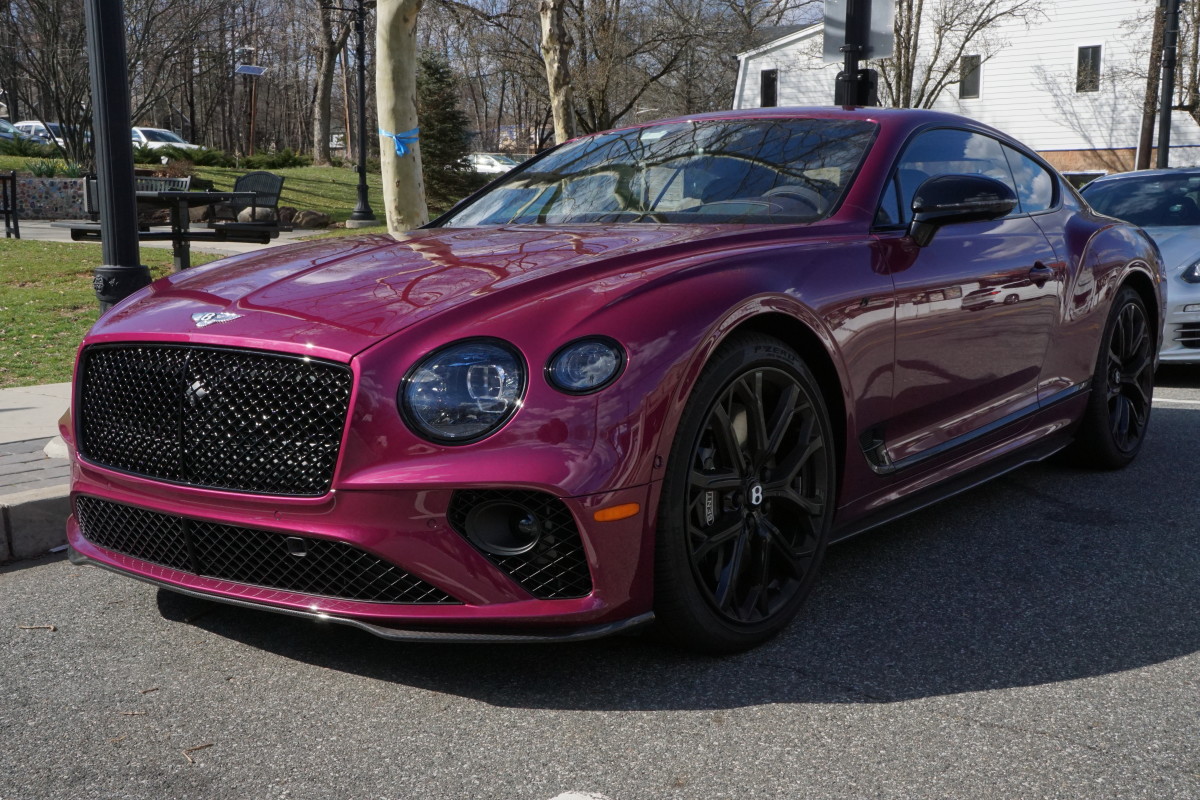
As modern cars become faster, more efficient, increasingly technologically advanced and designed without any aesthetic limitations, one would think that the latest and greatest new cars would stand out in a crowd with a range of bold, flashy and unique new paint colors.
However, new data suggests that this is not the case, as cars sold 20 years ago were much more colorful than the 'grayscale' machines that exit dealership lots today.
Related: Labor Department suit accuses Hyundai, supply chain partners of child labor practices

Per a new study by iSeeCars, cars painted 'grayscale' colors such as black, silver, grey and white accounted for 80% of all cars sold in 2023; a stark contrast to 60.3% for the 2004 model year.
Of the four 'grayscale' colors, plain, ol' white is the most popular of the bunch, accounting for 27.6% of all new cars sold in 2023, compared to just 15.6% in 2004. Black takes the second-place slot, making up 22% of new car sales in 2023, compared to 14% in 2004, while gray takes third with a 21.3% share and silver rounds the list out with 9.1%.
Interestingly, silver cars have become less popular as a car color over the 20-year span, as in 2004, silver cars made up 19%; a 52.2% drop in popularity.

As for more 'colorful' cars, those painted in blue take the crown with a 8.9% market share in 2023, followed by red with 7.3% and green with a measly 2%.
iSeeCars executive analyst Karl Brauer notes that despite automakers' efforts to offer its cars in a variety of colors, they aren't out on the road — which could spell trouble for the once-wide palette of new car colors in the future.
“Colorful cars appear to be an endangered species,” Brauer said. “Despite a diverse palette being offered by automakers, there are far fewer non-grayscale cars sold today. They’ve lost half their market share over the past 20 years, and they could become even rarer in another 20 years.”
More Automotive:
- Maserati exec defends the use of a car feature drivers hate
- Feds are skeptical about the safety of popular driver-assist tech
- Young guys who like loud cars are likely to be psychopaths, study suggests
Related: The fall of the Geneva Motor Show sets the tone for the future of auto marketing
It's the dealers, not the customers:

In a comments of a Reddit post about the study on the r/cars subreddit, Reddit user u/Strength-Certain explained that fearful dealers are hesitant to stock cars in colors other than 'grayscale' due to the possibility of having unsold cars left at on their lots.
"You are not the customer. The way the US franchise system works, the dealer is the customer. The dealer is scared that fun or inventive or slightly out of the ordinary colors won't sell or will sit on the lot for too long," explained the Reddit user. "This is why we get the tyranny of three different shades of black, four different shades of gray, two different white colors, and token reds and blues, maybe a green if we're lucky."
AutoForecast Solutions Global Vehicle Forecasting VP Sam Fiorani expanded on this notion, noting that dealers having these "bland" colors are a "safe" bet than having something that might sit in showrooms or on dealer lots, and make it appear that a dealer isn't doing too good.
"In their opinion, the blander colors will not offend many buyers, however, the brighter hues will provide a polarizing effect on potential buyers, with too many to the dealer’s taste turning away," Fiorani told TheStreet in a statement. "If a riskier color sits on the lot a little longer, it may appear to frequent visitors that the stock isn’t turning over, however it is just as likely that flashier colors could also lure a potential buyer onto the lot. Dealers just don’t like to gamble on such things."
Fiorani also mentioned that some of the 'colorful' colors, are additional, extra-cost options that get tacked onto the sticker price of a car that the dealer still has to pay for, especially if negotiations with customers get heated. Additionally, the color of a car could determine how much a car is worth once it gets a new owner.
"On the other end of the car’s life, the choice of color could win over a prospective second-hand buyer or lose them altogether," Fiorani said. "Choosing a more moderate color avoids these issues, for good and bad. It’s just less risky."
This kind of car gets the color treatment:

James Ochoa
Related: The comfort I found in discomfort: How a purple Bentley tested my social anxiety
However, there is one segment where the color palette is wide open: specialty cars like luxury cars, sports cars and even traditional passenger cars like sedans. As per Fiorani, these kind of cars tend to carry more exciting colors because they "were designed to draw attention to themselves and their owners."
"In a market where pickups and utility vehicles dominate, traditional passenger cars and especially sports coupes and convertibles are offered in a higher percentage of shades of blue or red rather than the typical black/white/gray/silver palette. These personal choices by the buyers to be different extends beyond body style into the owner’s decision for a primary color rather than the market’s center around greyscale."
Related: Veteran fund manager picks favorite stocks for 2024







